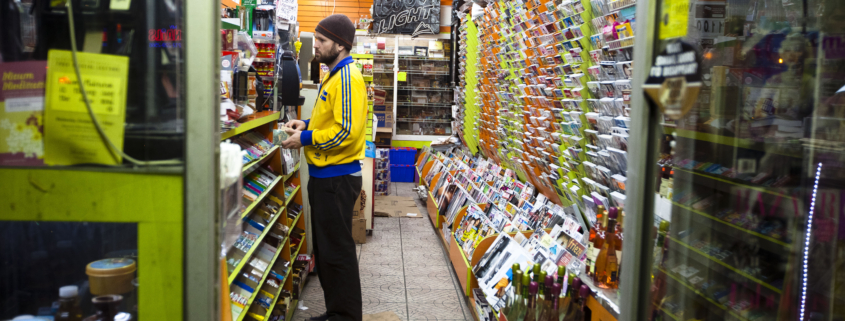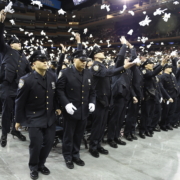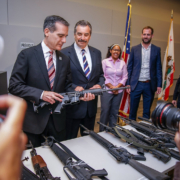The Shopkeepers’ Dilemma as a Pedagogical Tool
Instructors use a variety of methods to deliver content to undergraduate students, including those that foster critical thinking. Although traditional methods like lectures, assigned videos, and exercises from textbooks can be valuable, facilitating engagement and interaction is typically a more effective strategy for student learning.
To enable this type of pedagogy, I often present field-relevant scenarios that involve multiple dilemmas to my students. Then I ask them to actively solve these problems, and propose viable solutions, through group based role-playing exercises.
What do I mean by scenario based pedagogy and problem solving?
One of my go to scenarios that I use in one of my undergraduate criminal justice classes is what I call “The shopkeeper’s dilemma.”
I ask my students to imagine a shopkeeper, akin to a Seven-Eleven or bodega owner, situated in a relatively large city such as Baltimore, Toronto, London, Paris, etc. The store faces a recurring challenge where homeless individuals, many grappling with mental illness and polydrug use, regularly shoplift small food items. While the monetary value of the stolen items is relatively low, (nonetheless leading to a loss in profits), dealing with these people has become a persistent nuisance. Despite displaying signs warning of prosecution and the presence of CCTV cameras, the shopkeeper’s attempts—whether verbally warning or attempting to ban these individuals from the store—prove ineffective as they keep returning.
Understandably, there are no simple solutions to this scenario. And the implications extend beyond the shopkeeper; if the shopkeeper opts to contact the police, a chain reaction of events and involvement by various criminal justice practitioners ensues. This is when things can become not just complicated but interesting too.
I challenge my students to consider not only how the shopkeeper might respond to the scenario, but also how other criminal justice practitioners (e.g., law enforcement, including a police dispatcher, a prosecutor, public defender, and even a judge), could react. Would other members of the criminal justice system become involved, why, and how might they respond? The participation of each of these men and women, and their respective actions carries numerous implications. I also ask my students to apply whatever they have learned to date in the class (via lectures, and reading materials) to this scenario.
I typically divide the class into four or five groups. I assign each group one specific role (i.e., shopkeeper, police officer, prosecutor, bystander, judge, etc.), and ask them to choose a spokesperson.
The spokesperson is tasked with assembling the group’s answers, and publicly explaining not only how their assigned person (i.e., police officer, etc.) might react, but also the optimal way to respond and the reasoning behind it.
Following each group’s presentation, we discuss the implications of these decisions. Sometimes I wait for all presentations to be made, whereas other times I immediately go to class discussion after each group presents. (I warn students about this strategy beforehand). The initial method can become a little boring and students will almost always want to jump in and criticize an approach. The latter method is more dynamic, and group spokespeople will need to think on their feet to adjust what their group decided based on the information that the other students present.
These types of exercises are not without their drawbacks
Coming up with appropriate scenarios like this one is relatively labor intensive. Occasionally, in order to develop a pool of ideas, sometimes I ask my students to suggest a relevant field specific ethical dilemma that might work well for the class. Alternatively, I draw inspiration from local, regional or national news events (i.e., police shootings, horrific crimes, etc.) as a reservoir from which to draw. In both cases I will modify these ideas depending on my perceptions about what will work best with my students.
For lots of reasons, many students, particularly those who are shy and or like to “hide” during class, are not keen on interacting with each other and are going to complain. (This is a little hard to fathom with criminal justice students who are going to have to interact with the public as part of their jobs).
Sometimes this discussion method is a little difficult to manage with zoom based classes, but the breakout room feature in this program is perfectly suited to enable this process.
Also some instructors may be tempted to factor student’s level and degree of interaction into a participation grade, the primary goal with this exercise is to get them talking, thinking and interacting, to challenge not just what they know but their decision-making choices.
Why is this approach helpful?
Let’s face it, over time most classes can get a little boring. For example, standing in front of a class and lecturing becomes tedious not only for instructors, but students alike. Thus, I’ve found that mixing things up (like using scenario based instruction) is often the best way to teach my undergraduate students about the complexities of the subject matter.
This method can be tailored to suit the dynamics of any class size. It is applicable not only to smaller classes of 20-45 students but also scalable for larger class sizes that fill lecture halls. The only limit is your creativity
Moreover, most fields are messy and often there are no correct answers, just better and worse approaches to situations given the facts that are present at the moment or competing things that are happening with the actors that are involved.
I’ve also found that scenario and roll playing exercises forces many of my students out of their passive bystander status and to be more active participants in their own learning. Additionally, the more real life the scenario (problems that the students may forced to solve when and if they become criminal justice practitioners) the better the learning experience.
More importantly, this approach fosters deeper and more meaningful interactions among students and between students and instructors.
The future is now
In sum, if instructors want their students to do more then be able to recall information that is presented to them in class, it’s crucial to push them out of their comfort zones and actively engage them. Although scenario based exercises are not the only way to accomplish this goal, they are some of the most cost-effective tools that are available to instructors. It’s a bit challenging at first to introduce this type of pedagogy in the classroom, but overtime it gets easier as you learn through trial and error which scenarios are most appropriate and which kinds of prompts work best.
Photo Credit
Photographer: Dan Nguyen
Title: Bodega buy








 https://rosarubicondior.blogspot.com/2021/02/trumps-legacy-how-trump-made-america.html
https://rosarubicondior.blogspot.com/2021/02/trumps-legacy-how-trump-made-america.html


